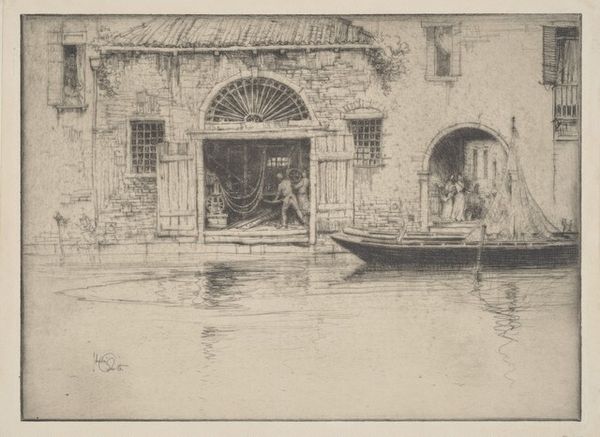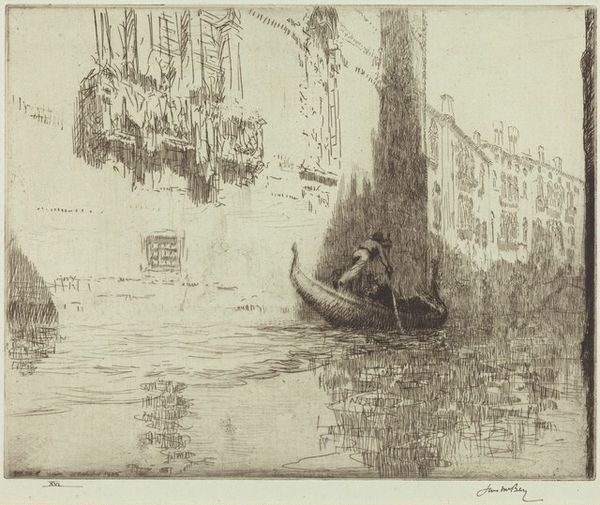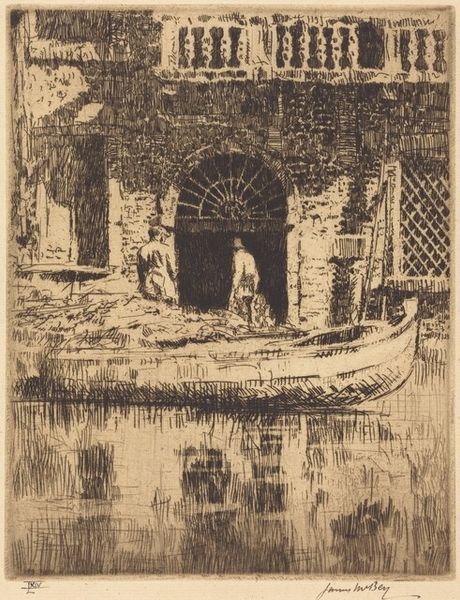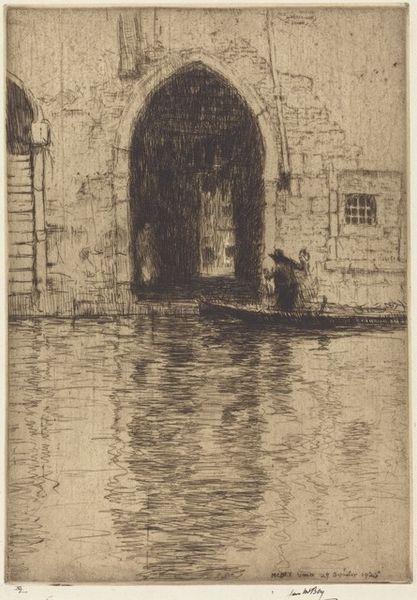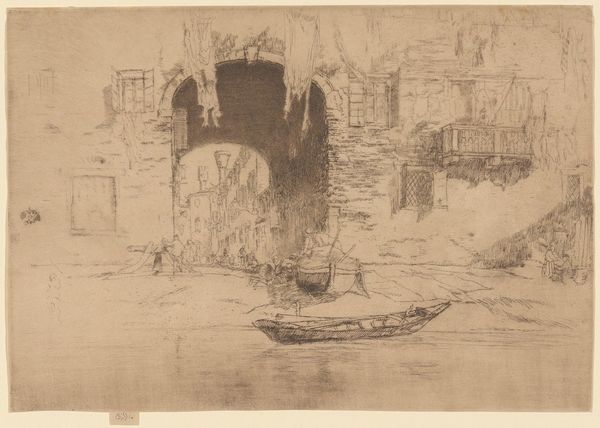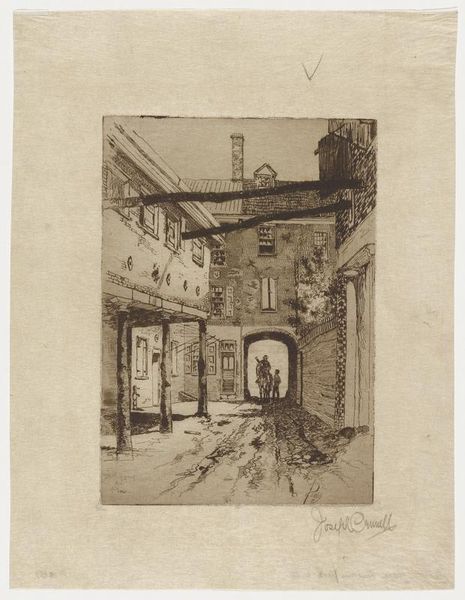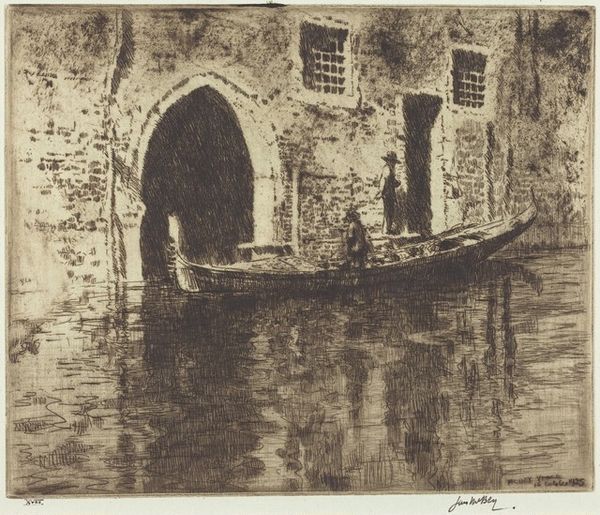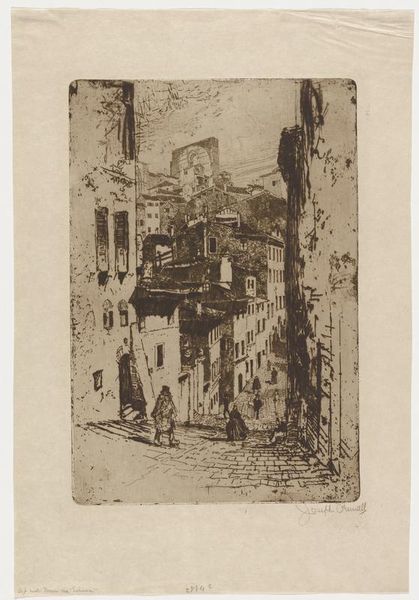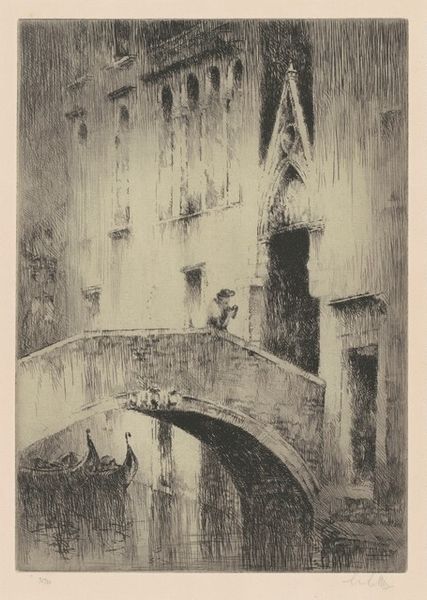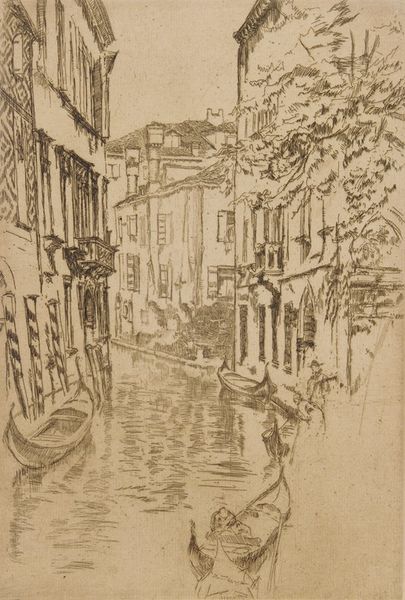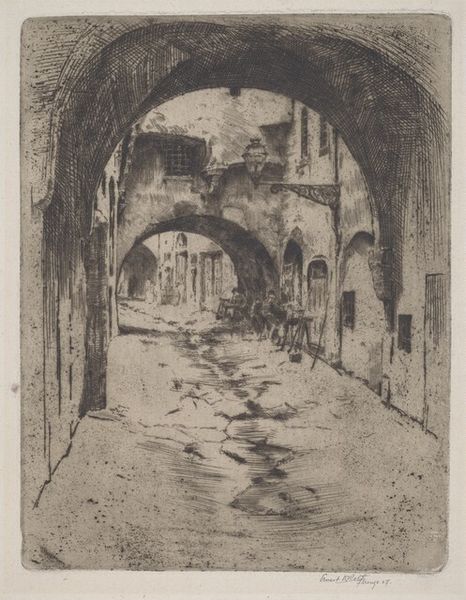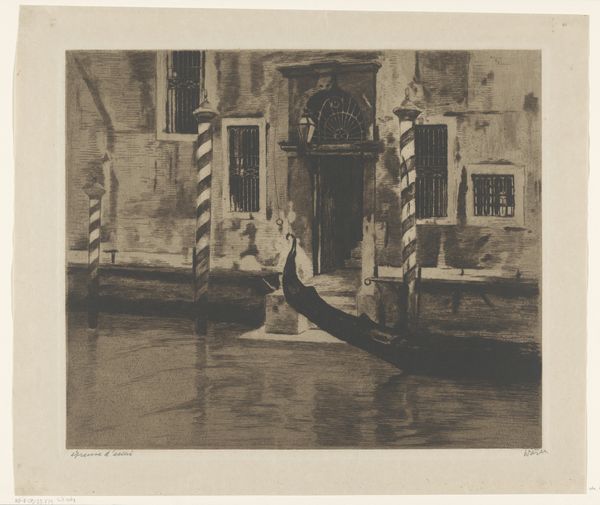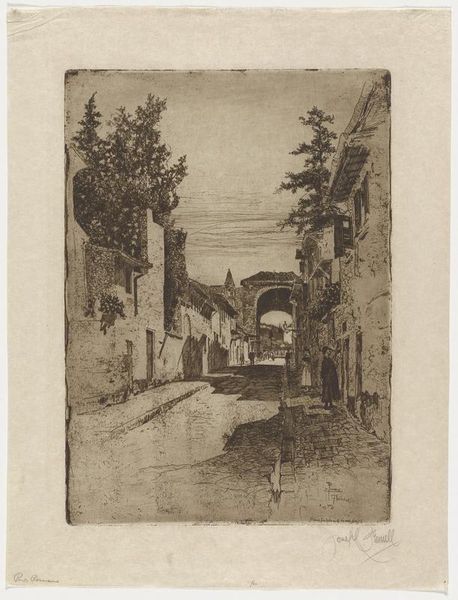
Copyright: Public Domain: Artvee
James Abbott McNeill Whistler created this etching, "Two Doorways," capturing a Venetian scene with its architectural nuances. Observe how the arched doorway and the ornate gate suggest more than mere entrances; they symbolize thresholds. The archway, a motif echoing through time from Roman triumphal arches to Gothic cathedrals, represents passage—a transition from one state to another. Similarly, the gate, often intricately designed, suggests both exclusion and invitation, a boundary that can either be a barrier or a promise of entry. Consider the cyclical nature of such symbols. The doorway's presence in ancient Egyptian art, signifying the passage to the afterlife, reappears in Christian art as the entrance to Paradise. These symbols resonate across cultures, continually reshaped by collective memory and the human subconscious, influencing how we perceive and interact with the world around us. The doorway as an emblem, charged with the emotional weight of potential and transformation, powerfully engages viewers on a deep, subconscious level. It is a reminder of the eternal cycle of departure and arrival, a theme that continues to resurface, evolve, and take on new meanings throughout history.
Comments
No comments
Be the first to comment and join the conversation on the ultimate creative platform.
